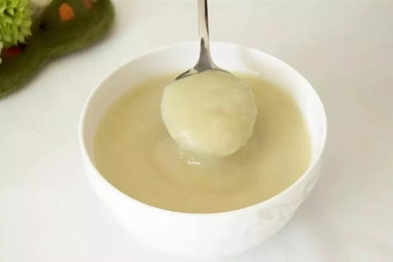Sbloccare le fasi chiave della produzione di cereali di riso per l'infanzia
The production of infant rice cereal is a meticulously controlled process that blends food science with stringent safety protocols. Unlike conventional food manufacturing, it requires extreme precision at every step to ensure the final product is safe, nutritious, and easily digestible for infants. Here, we unlock the critical stages involved in producing this essential first food.
1. Raw Material Sourcing and Inspection: The Foundation of Safety
The process begins long before production, with the careful selection and validation of raw materials.
- Selezione dei cereali: High-quality, low-protein white rice is typically chosen for its hypoallergenic properties and gentle digestibility. Suppliers are rigorously vetted, and certificates of analysis (COAs) are mandatory.
- Comprehensive Testing: Incoming rice undergoes stringent laboratory analysis. This includes checks for:
- Metalli pesanti: Arsenic, lead, cadmium, and mercury levels must be far below permissible limits for infant food, often requiring rice from specific, low-contamination regions.
- Pesticide Residues: Ensuring compliance with the strictest global standards.
- Micotossine: Screening for aflatoxins and other mold-derived toxins.
- Microbiological Contaminants: Testing for pathogens like Salmonella e E. coli is non-negotiable.
This stage is the bedrock of the entire process, where absolute safety is prioritized.
2. Cleaning, Dehulling, and Milling: Creating the Base Powder
The approved rice is transformed into a uniform, consumable powder.
- Cleaning and Dehulling: Rice passes through screens, magnets, and destoners to remove physical impurities like dust, husks, and foreign materials.
- Precise Milling: The cleaned rice is milled into a fine flour. Controlling the particle size is crucial; too coarse, and the cereal will be gritty; too fine, it may become sticky. The flour is sifted to achieve perfect uniformity.
This step produces the neutral-tasting, smooth base powder that defines the cereal’s texture.
3. Hydrothermal Treatment (Pre-Cooking/Gelatinization): Unlocking Digestibility
Raw rice starch is indigestible for infants. This stage pre-digests the starch through cooking.
- Steam Cooking: The rice flour is conditioned with steam and heat in a precooker or extruder. This process, called gelatinization, breaks down the starch molecules, making them soft and easy to absorb.
- Asciugatura: The cooked, wet mass is immediately dried using drum dryers or hot-air dryers to reduce moisture content to a safe level for storage and further processing. This stabilizes the product and prevents microbial growth.
This is the most critical nutritional step, transforming the rice into an easily digestible form suitable for immature digestive systems.
4. Nutrient Fortification: Engineering Complete Nutrition
Plain rice powder lacks essential nutrients infants need for development. Fortification is where science meets nutrition.
- Precision Dosing: A custom vitamin and mineral premix is accurately metered and blended into the base powder. Key nutrients always include:
- Ferro: Critical for preventing anemia and supporting cognitive development.
- Zinco: Vital for immune function and growth.
- Calcio e vitamina D: Essential for bone development.
- B-Vitamins: Especially Thiamine (B1), crucial for energy metabolism.
- Homogenization: The mixture is blended thoroughly in a large-scale homogenizer to ensure every single serving contains a perfectly uniform and precise dose of each nutrient.
This step elevates the product from a simple carbohydrate source to a targeted nutritional support tool.
5. Packaging and Quality Assurance: Ensuring Integrity and Safety
The final product is protected from its greatest enemies: moisture, oxygen, and contamination.
- Aseptic Packaging: The fortified powder is packed in a high-hygiene environment. The most common method is Nitrogen Flushing (Modified Atmosphere Packaging). Replacing the oxygen in the package with inert nitrogen gas prevents oxidation (rancidity), protects sensitive vitamins, and inhibits microbial growth. It also cushions the powder to prevent compaction.
- Final Validation: Sealed containers are metal-detected and checked for seal integrity. Samples from each batch are held for final quality control testing, which confirms:
- Nutritional content matches label claims.
- Gli standard di sicurezza microbiologica sono rispettati.
- Moisture content and water activity ensure shelf stability.
- Sensory properties (color, flavor, aroma) are perfect.
Conclusion: A Symphony of Precision and Care
Unlocking the production of infant rice cereal reveals a process where there is no room for error. It is a symphony of precision engineering, nutritional science, and uncompromising quality control. Each stage—from validating the purity of a single grain of rice to ensuring the perfect seal on a canister—is designed to build trust and ensure the health of the most vulnerable consumers. Mastering these interconnected steps is the key to delivering a product that truly supports healthy infant development.








